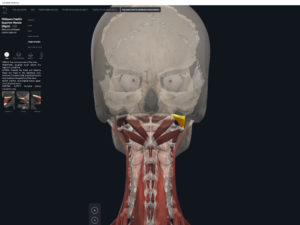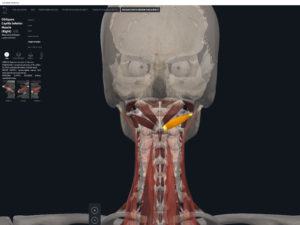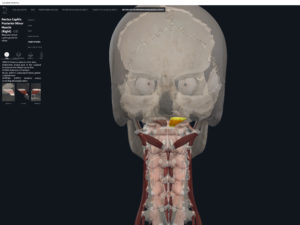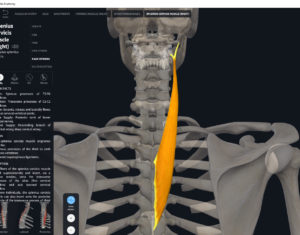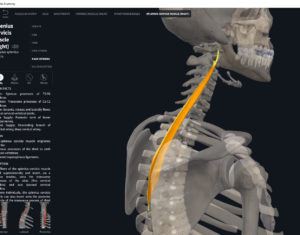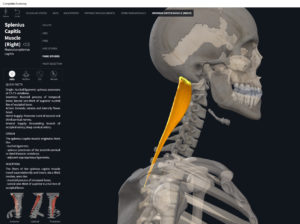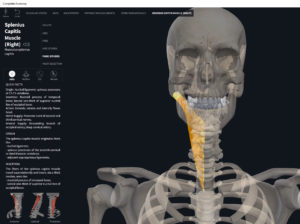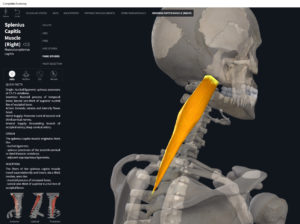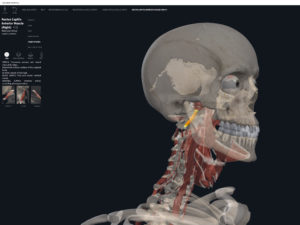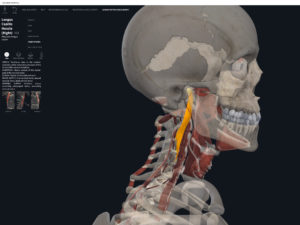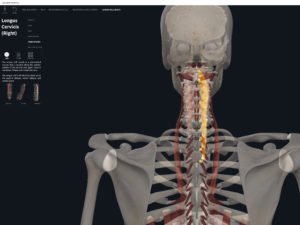Anatomy & Physiology: Muscles—Obliquus Capitis Superior.
Structure.
- Origin: transverse process of C1.
- Insertion: occipital between the superior and inferior nuchal lines.
Function.
- Concentric action: head protraction. Lesser: lateral flexion, extension, and contralateral rotation of head.
- Reverse mover action: C1 retraction, lateral flexiont, extension, and ipsilateral rotation of C1.
- Eccentric action: controls/restrains/slows retraction, contralateral lateral flexion, flexion, ipsilateral rotation of head.
- Isometric action: stabilization of head and C1.
- Innervation: suboccipital nerve.
- Arterial supply: occipital artery, deep cervical artery, branches of vertebral artery.
Clinical Significance.
References
Biel, A. (2015). Trail guide to the body: A hands-on guide to locating muscles, bones and more.
Cedars-Sinai. (2018). Vertebrae of the spine. Retrieved from https://www.cedars-sinai.org/health-library/diseases-and-conditions/v/vertebrae-of-the-spine.html
Clark, M., Lucett, S., Sutton, B. G., & National Academy of Sports Medicine. (2014). NASM essentials of corrective exercise training. Burlington, MA: Jones & Bartlett Learning.
Jenkins, G., & Tortora, G. J. (2012). Anatomy and Physiology: From Science to Life, 3rd Edition International Stu. John Wiley & Sons.
Muscolino, J. E. (2017). The muscular system manual: The skeletal muscles of the human body.
